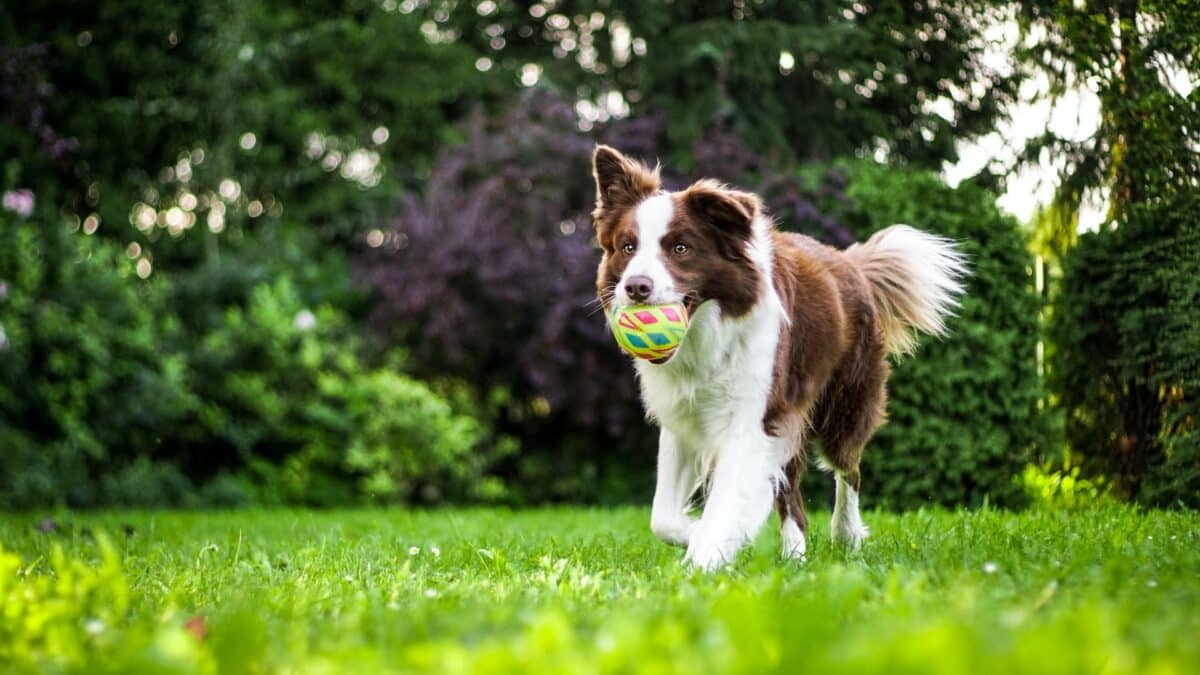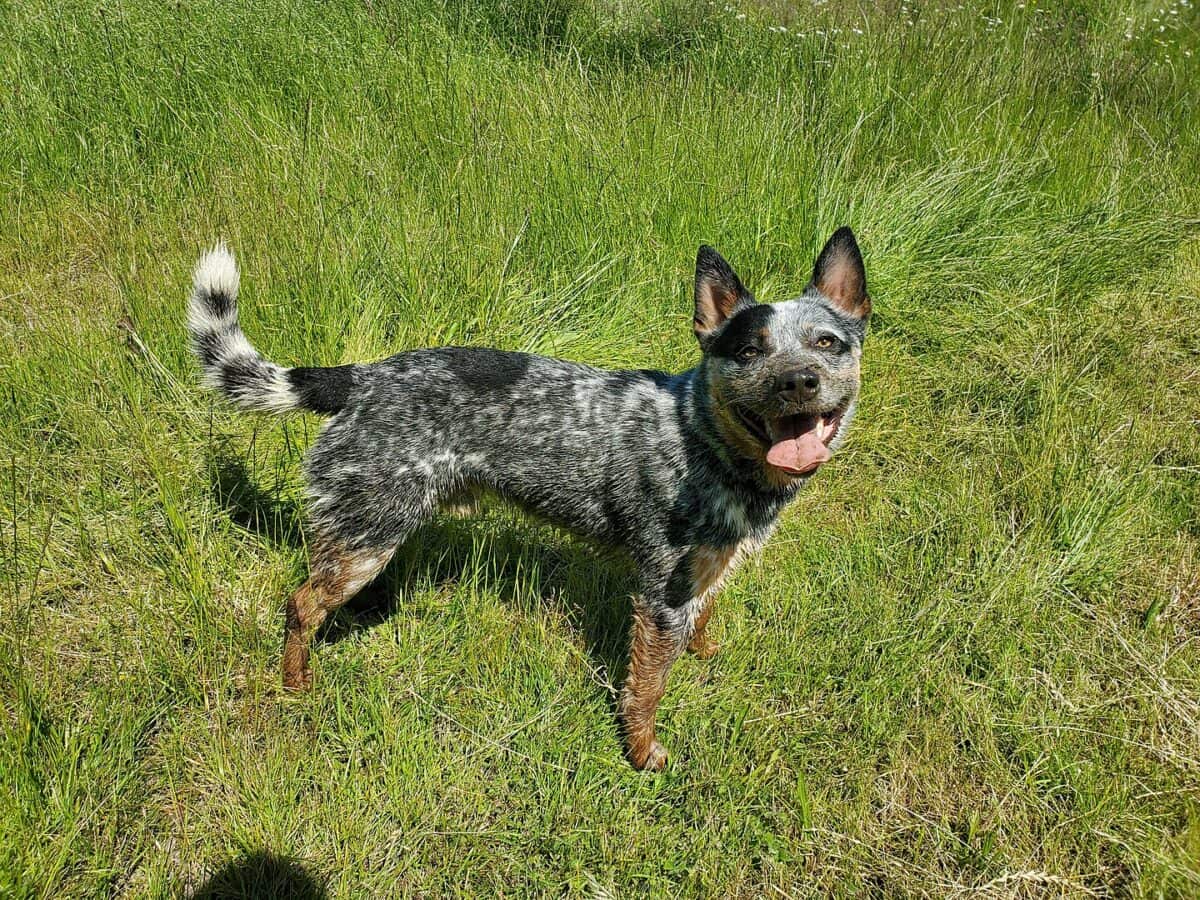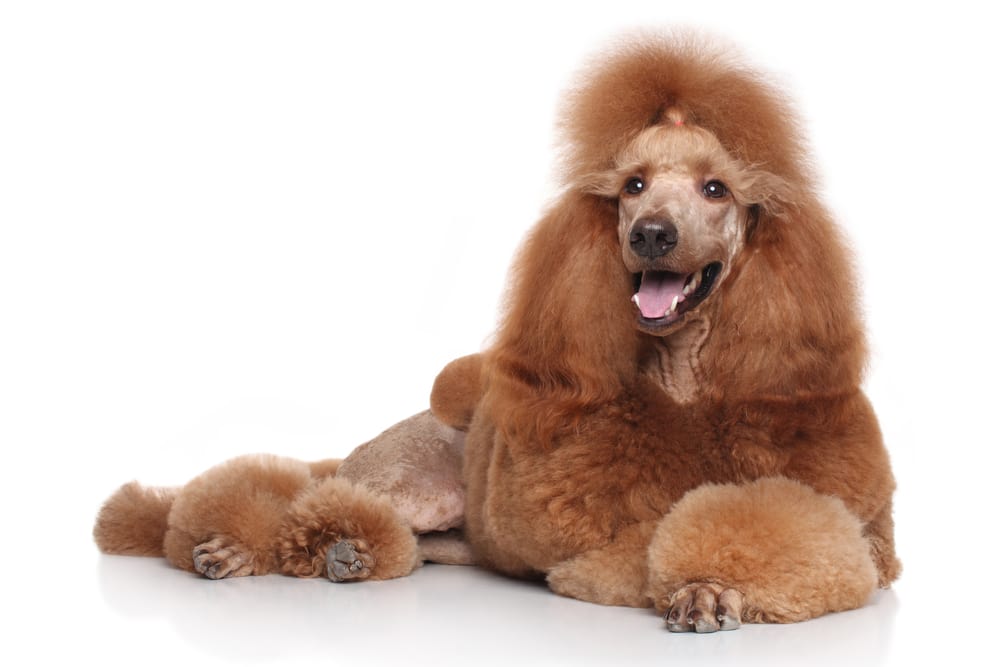Dogs have been our loyal companions for thousands of years, but many breeds were originally developed for specific purposes beyond just providing companionship. These working breeds have innate drives and instincts that, when left unfulfilled, can lead to behavioral problems, anxiety, and overall unhappiness. Understanding which breeds need mental stimulation and purposeful activities is crucial for potential owners to ensure their canine companions lead fulfilled lives. This article explores 13 dog breeds that truly thrive when given a job to do, whether it’s herding, hunting, guarding, or participating in canine sports.
Border Collies The Ultimate Working Machines

Border Collies consistently rank among the most intelligent dog breeds in the world, with an exceptional ability to understand new commands in fewer than five repetitions. Originally bred for herding livestock in the challenging border country between Scotland and England, these dogs possess an intense work ethic and remarkable problem-solving abilities. Without adequate mental stimulation and physical exercise, Border Collies often develop destructive behaviors such as excessive barking, digging, or chewing. Their herding instinct remains so strong that many Border Collies will attempt to herd children, other pets, or even moving cars if not given an appropriate outlet. Providing them with activities like agility training, competitive obedience, flyball, or even teaching them complex tricks can help satisfy their need for mental engagement and prevent the development of neurotic behaviors.
German Shepherds The Versatile Protectors

German Shepherds were originally developed in the late 19th century as herding dogs, but their intelligence, trainability, and versatility quickly made them valuable in numerous working roles. Today, they excel in police work, military service, search and rescue operations, and as service dogs for people with disabilities. Their natural protective instincts, combined with exceptional intelligence (they rank third among all breeds), create a dog that needs purpose and structure. A German Shepherd without a job often becomes anxious and may channel their energy into destructive behaviors or excessive barking. These dogs thrive with regular training sessions, problem-solving games, and activities that allow them to use their natural protective instincts, such as tracking exercises or protection sports like Schutzhund. Their strong bond with their human family makes them particularly responsive to training that involves close cooperation with their owner.
Australian Shepherds The Energetic Herders

Despite their name, Australian Shepherds were actually developed in the United States as all-purpose farm and ranch dogs. These medium-sized herding dogs possess extraordinary energy levels and need several hours of activity daily to remain balanced and happy. Their intelligence ranks in the top tier of all dog breeds, making mental stimulation as important as physical exercise. Without proper outlets for their energy and intelligence, Australian Shepherds commonly develop anxiety-related behaviors including destructiveness, excessive vocalization, and even self-harming activities like excessive licking or tail-chasing. These dogs excel in competitive dog sports, particularly agility and disc competitions, where their natural athletic ability and quick thinking are valuable assets. Many Australian Shepherds also enjoy having specific household responsibilities, such as retrieving the newspaper or gathering toys, which gives them a sense of purpose even in homes without livestock to herd.
Belgian Malinois The Intense Working Partners

The Belgian Malinois has gained recognition in recent years for their exceptional work in military and police roles, including their service with elite units like the U.S. Navy SEALs. Often mistaken for German Shepherds, Malinois are actually more intense, with higher energy levels and an extraordinary work drive. These shepherd dogs require significant physical exercise—often 2-3 hours daily of vigorous activity—along with challenging mental work. Their need for stimulation is so pronounced that many professional trainers caution against Malinois ownership for average families. Without proper channels for their intelligence and energy, these dogs can become destructive and develop severe behavioral problems. They excel in protection sports, detection work, agility, and other high-intensity dog activities. Their exceptional work drive makes them happiest when given complex tasks that combine physical challenge with problem-solving opportunities. Successful Malinois owners typically incorporate training into everyday life, turning routine activities into work opportunities for these driven dogs.
Jack Russell Terriers The Tenacious Hunters

Originally bred in England to hunt foxes, Jack Russell Terriers pack tremendous energy and determination into their small frames. These dogs were specifically developed to work independently, making decisions underground while pursuing prey without handler guidance. This independent streak, combined with their high intelligence and boundless energy, creates a dog that becomes frustrated and destructive without adequate mental and physical challenges. A Jack Russell with insufficient stimulation may become an excessive barker, digger, or escape artist. Their hunting instincts remain strong, making them ideal candidates for earth dog trials, barn hunt competitions, or agility courses that mimic the challenges of navigating underground tunnels. Their tenacity means they rarely tire of games like fetch or tug, and many owners find success by teaching them tricks that require physical exertion combined with mental focus. Despite their small size, these terriers require as much engagement and purpose as many larger working breeds.
Siberian Huskies The Independent Sled Dogs

Developed by the Chukchi people of northeastern Asia, Siberian Huskies were bred to pull sleds over long distances in harsh Arctic conditions while requiring minimal energy input (food). This specialized purpose created a dog with tremendous endurance, an independent nature, and a strong desire to run. Huskies that don’t receive adequate physical outlets often become escape artists extraordinaire, with abilities to dig under, jump over, or otherwise defeat fencing that would contain other breeds. Their intelligence is focused on problem-solving rather than obedience, making them challenging to train through conventional methods. Huskies thrive with activities that allow them to pull, such as skijoring, bikejoring, or canicross, where they can fulfill their innate purpose. Their independent nature means they need a job that aligns with their natural instincts, rather than trying to force them into roles better suited to more biddable breeds. Many Husky owners find that providing their dogs with puzzle toys, challenging hikes, and opportunities to pull appropriate objects helps satisfy their working needs.
Australian Cattle Dogs The Tireless Drovers

Developed in Australia to work in the challenging conditions of the Outback, Australian Cattle Dogs (also known as Blue Heelers) possess extraordinary stamina, intelligence, and determination. These dogs were bred to move stubborn cattle across vast distances in extreme heat, creating a working dog that rarely tires and constantly seeks something to do. Their natural herding style involves nipping at cattle’s heels, and without appropriate outlets, they may attempt to herd family members or other pets using the same techniques. Australian Cattle Dogs form deep bonds with their owners but can become destructive and develop behavioral problems when bored. Their problem-solving abilities are exceptional, making them adept at finding ways to entertain themselves—often to their owners’ dismay. Successful Australian Cattle Dog owners typically engage these dogs in activities like herding trials, agility, flyball, or extensive training for useful tasks around the home. Their high intelligence makes them excellent candidates for learning complex sequences of behaviors, which can provide the mental stimulation they crave.
Doberman Pinschers The Loyal Guardians

Developed in Germany in the late 19th century by tax collector Louis Dobermann, who needed a protective companion for his rounds, the Doberman Pinscher was specifically bred to be an intelligent, versatile protection dog. Ranking among the top five most intelligent dog breeds, Dobermans combine sharp mental acuity with athletic ability and natural protective instincts. Without proper training and purpose, these powerful dogs can become anxious or develop unwanted guarding behaviors. Despite their imposing appearance, Dobermans are sensitive dogs that form deep bonds with their families and need both physical work and mental engagement to thrive. They excel in protection sports, advanced obedience, tracking, and service roles. Their strong desire to work with their human makes them particularly responsive to training that strengthens the handler-dog relationship. Many Doberman owners find success with regular training routines that incorporate protection concepts, scent work, and physical challenges, all of which tap into the breed’s natural abilities while strengthening the bond between dog and handler.
Rottweilers The Confident Workers

With origins dating back to the Roman Empire, Rottweilers were used to herd livestock and pull carts for butchers, earning them the nickname “Butcher’s Dog.” These powerful, intelligent dogs possess a strong work ethic and natural protective instincts that need proper channeling through consistent training and purposeful activities. Rottweilers rank among the most intelligent dog breeds (9th position in Stanley Coren’s intelligence rankings) and require mental stimulation as much as physical exercise. Without proper outlets, their strength and intelligence can become problematic, potentially leading to destructive behaviors or inappropriate guarding. Successful Rottweiler owners typically involve their dogs in activities like carting, weight pulling, advanced obedience, tracking, or therapy work. Their natural confidence and steady temperament, when properly developed through purposeful work, creates a dog that remains calm and reliable even in challenging situations. Many Rottweilers also excel in roles that combine their natural protective instincts with their desire to work closely with their handlers, such as service or therapy dog work.
Vizslas The Versatile Hungarian Pointers

Originally bred as hunting dogs for the Magyar tribes of Hungary, Vizslas have earned the nickname “Velcro dogs” for their intense attachment to their human companions. These elegant, rust-colored sporting dogs combine high energy levels with exceptional sensitivity and intelligence. Bred to work closely with hunters both pointing and retrieving game, today’s Vizslas need significant physical exercise (typically 1-2 hours daily) and mental engagement to prevent anxiety-related behaviors. Their need for human companionship is so pronounced that they commonly suffer from separation anxiety when left alone for extended periods. Vizslas excel in sporting activities like field trials, hunt tests, agility, and dock diving. Their natural athleticism and endurance also make them excellent running companions for active owners. The ideal environment for a Vizsla includes both physical challenges and opportunities to use their scenting abilities and natural hunting instincts through activities like nose work or tracking. Their sensitivity means they respond best to positive reinforcement training that builds confidence while providing the structure and purpose they crave.
Dutch Shepherds The Versatile Farmhands

Less well-known than their German and Belgian cousins, Dutch Shepherds were originally developed as all-purpose farm dogs in the Netherlands, where they herded livestock, pulled carts, guarded property, and kept farms free of vermin. This diverse background created an exceptionally versatile working dog with high intelligence, athletic ability, and a strong work drive. Dutch Shepherds remain relatively rare outside their homeland, but have gained recognition for their excellence in police and military work, search and rescue operations, and competitive dog sports. Their natural versatility makes them adaptable to many working roles, but this same trait means they become frustrated and destructive without adequate mental and physical challenges. These dogs thrive when given varied responsibilities that engage different aspects of their working heritage. Many successful Dutch Shepherd owners rotate through different training activities—scent work one day, obedience the next, agility later in the week—to keep these intelligent dogs engaged and fulfilled. Their natural problem-solving abilities make them particularly well-suited to complex tasks that require autonomous decision-making.
Bernese Mountain Dogs The Gentle Giants with Work Ethic

Despite their imposing size and thick coat, Bernese Mountain Dogs were developed as working farm dogs in the Swiss Alps, where they pulled carts, drove cattle, and guarded farms. While more laid-back than some other working breeds, Bernese Mountain Dogs still possess an innate need for purposeful activity appropriate to their physical build and temperament. Their draft dog heritage makes them naturally inclined toward pulling activities, and many Bernese owners find that carting or weight pulling provides excellent physical and mental stimulation while honoring the breed’s working traditions. Without adequate purpose, these dogs can become destructive or develop problematic behaviors despite their generally calm demeanor. Their intelligence and eagerness to please makes them responsive to training, though their sensitivity requires gentle methods. Many Bernese Mountain Dogs excel in therapy work, where their calm nature and imposing yet gentle presence makes them excellent companions for people in need of emotional support. Their natural inclination to work closely with their humans makes them happiest when included in family activities while still being given specific responsibilities.
Standard Poodles The Versatile Retrievers

Though often stereotyped as prissy show dogs, Standard Poodles were originally developed as water retrievers for hunting, and they rank as the second most intelligent dog breed behind only Border Collies. Their exceptional intelligence, combined with high energy levels and natural athletic ability, creates a dog that requires significant mental and physical engagement. Without adequate stimulation, Standard Poodles often develop anxiety-related behaviors like excessive barking, destructive chewing, or neurotic behaviors such as shadow-chasing or spinning. Their retrieving heritage makes them natural candidates for activities like hunt tests, dock diving, or retriever training exercises. Their intelligence also makes them excel in obedience, agility, and trick training. Many Standard Poodle owners find that teaching their dogs to perform useful tasks around the home—retrieving specific items, carrying light objects, or performing complex tricks—helps satisfy their need for mental challenges. Their people-oriented nature means they thrive when given opportunities to work in partnership with their humans, rather than being expected to entertain themselves independently.
Conclusion: Meeting Your Working Dog’s Needs

Understanding the inherent needs of working dog breeds is essential for providing them with fulfilling lives that prevent behavioral problems and promote wellbeing. Each of these 13 breeds has unique characteristics and work preferences based on their historical purposes, from the herding instincts of Border Collies to the protective nature of Dobermans or the pulling drive of Siberian Huskies. Responsible ownership of these breeds requires commitment to providing appropriate physical exercise, mental stimulation, and purposeful activities that align with their natural instincts. For potential owners, honestly assessing your lifestyle and ability to meet these breeds’ substantial needs is crucial before bringing one into your home. With the right environment and adequate opportunities to fulfill their working drives, these intelligent and capable dogs can become extraordinary companions while avoiding the frustration and behavioral issues that often result when their needs go unmet.
- 13 Dog Breeds That Need a Job to Be Happy - August 12, 2025
- The Most Lightning Prone Places on Earth - August 12, 2025
- 12 Animals That Are So Big It is Hard to Believe They are Real - August 12, 2025

